Politics
Ai Weiwei’s Time in Prison Captured in Chilling Dioramas
See what it was like for the artist behind bars.
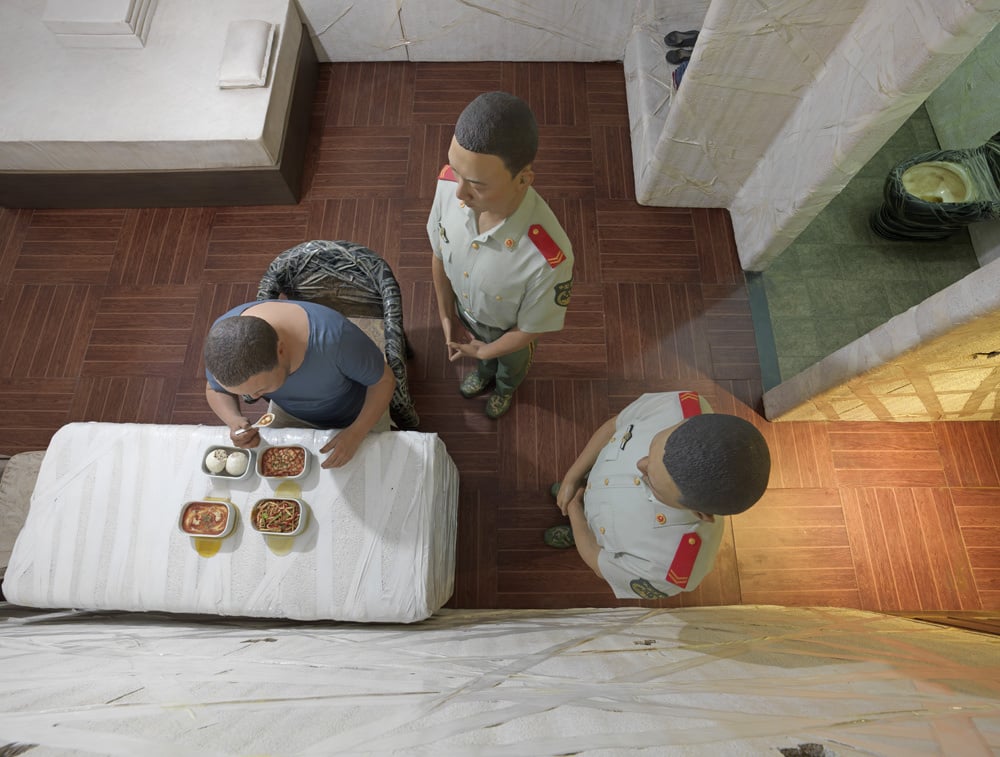
See what it was like for the artist behind bars.

Sarah Cascone

Five years after he spent 81 days imprisoned by the Chinese government, Ai Weiwei is offering the public a glimpse into his harrowing time behind bars. S.A.C.R.E.D., a six-part installation near-life size dioramas showing the artist and his prison guards inside steel boxes, is currently on view at the cathedral in Cuenca, Spain.
To get a glimpse of Ai’s prison routine, reports Reuters, viewers are forced into the role of helpless bystander as the artist is cruelly denied his freedom by nearby guards. Peepholes offer a glimpse at the degragation on display.
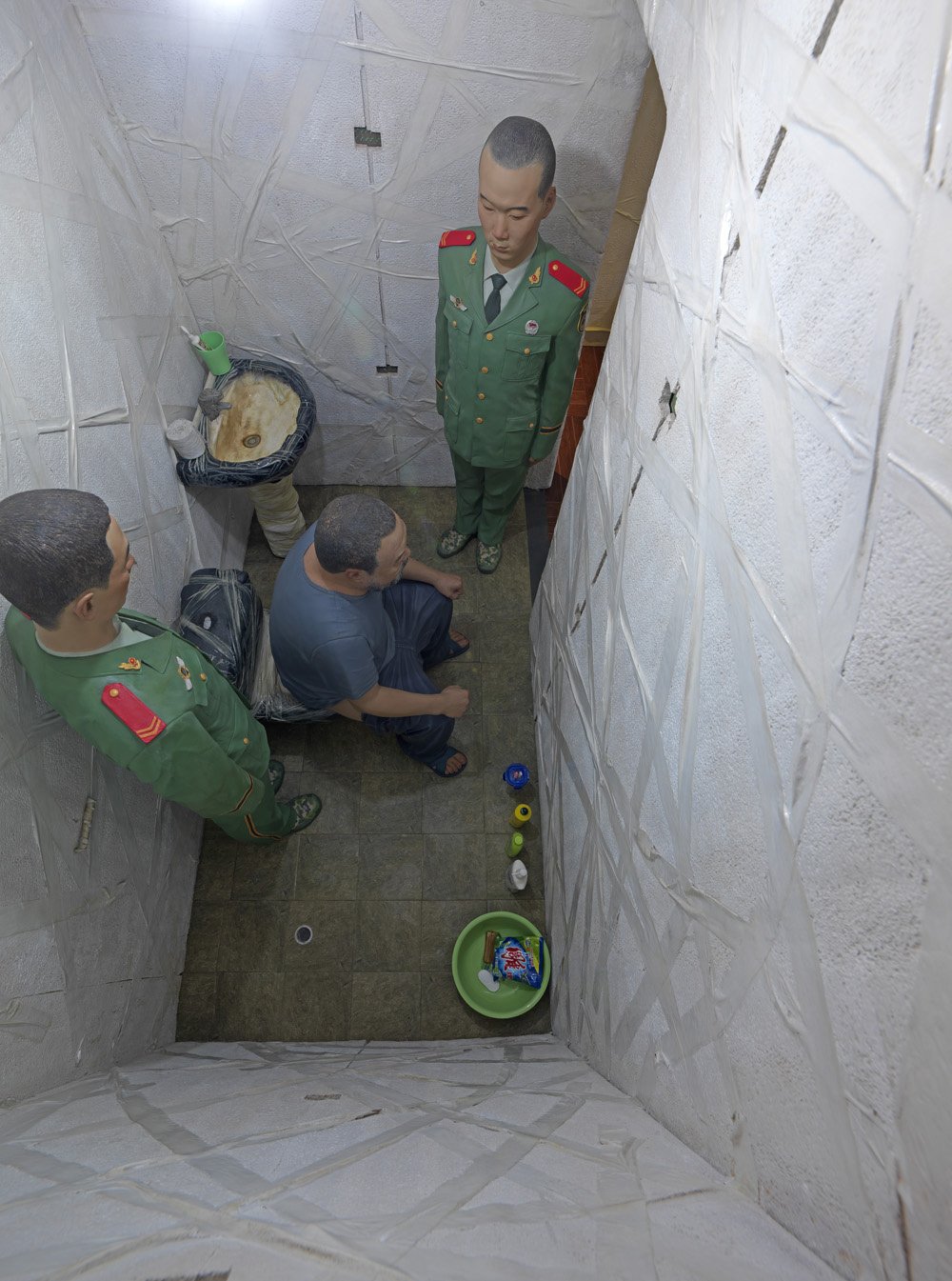
Ai Weiwei, S.A.C.R.E.D. (2013), a six-part work composed of (i) Supper, (ii) Accusers, (iii) Cleansing, (iv) Ritual, (v) Entropy, (vi) Doubt. Courtesy of Lisson Gallery.
The work is being shown as part of “The Poetry of Freedom,” a series of events taking place across Spain as the country celebrates the 400th anniversary of the death of Spanish novelist, playwright and poet, Miguel de Cervantes, the author of Don Quixote.
S.A.C.R.E.D. debuted at the 2013 Venice Biennale, in “Ai Weiwei: Disposition,” a collateral exhibition curated by Maurizio Bortolotti in collaboration with Lisson Gallery.
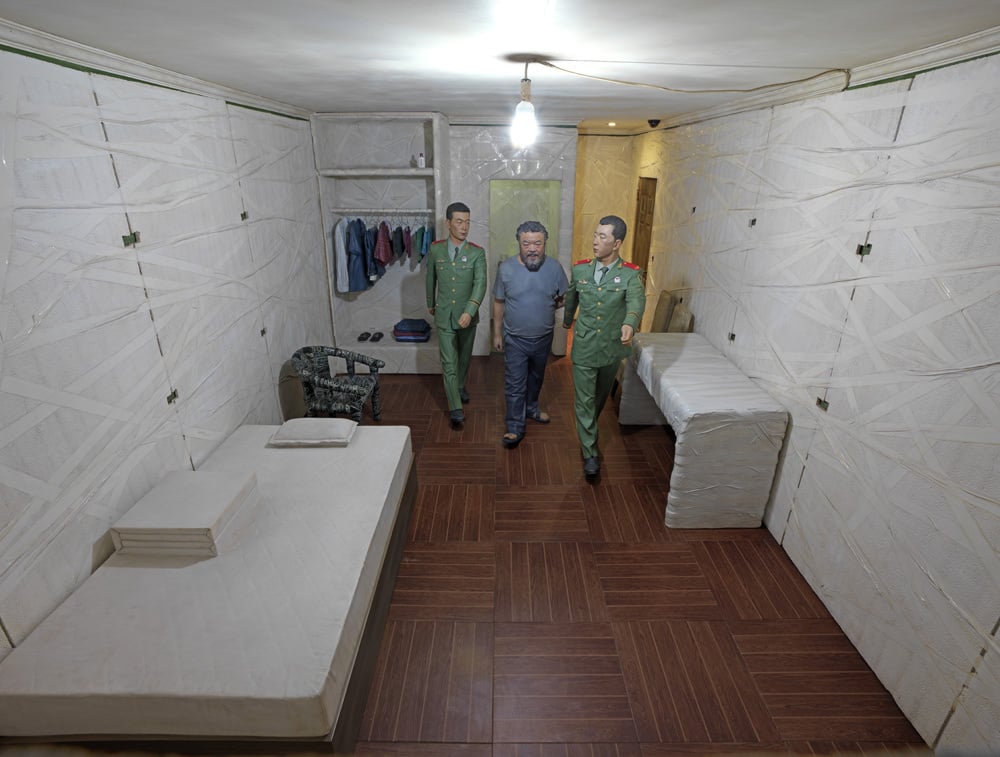
Ai Weiwei, S.A.C.R.E.D. (2013), a six-part work composed of (i) Supper, (ii) Accusers, (iii) Cleansing, (iv) Ritual, (v) Entropy, (vi) Doubt. Courtesy of Lisson Gallery.
Ai’s work is a natural fit in its current setting, considering that the Spanish novelist is said to have been struck with the inspiration for his most famous work during a five-month imprisonment in 1597.
“Freedom, Sancho, is one of the most precious gifts that heaven has ever given man,” reads one of the book’s most iconic lines, uttered by the title character to his constant companion, the long-suffering Sancho Panza.
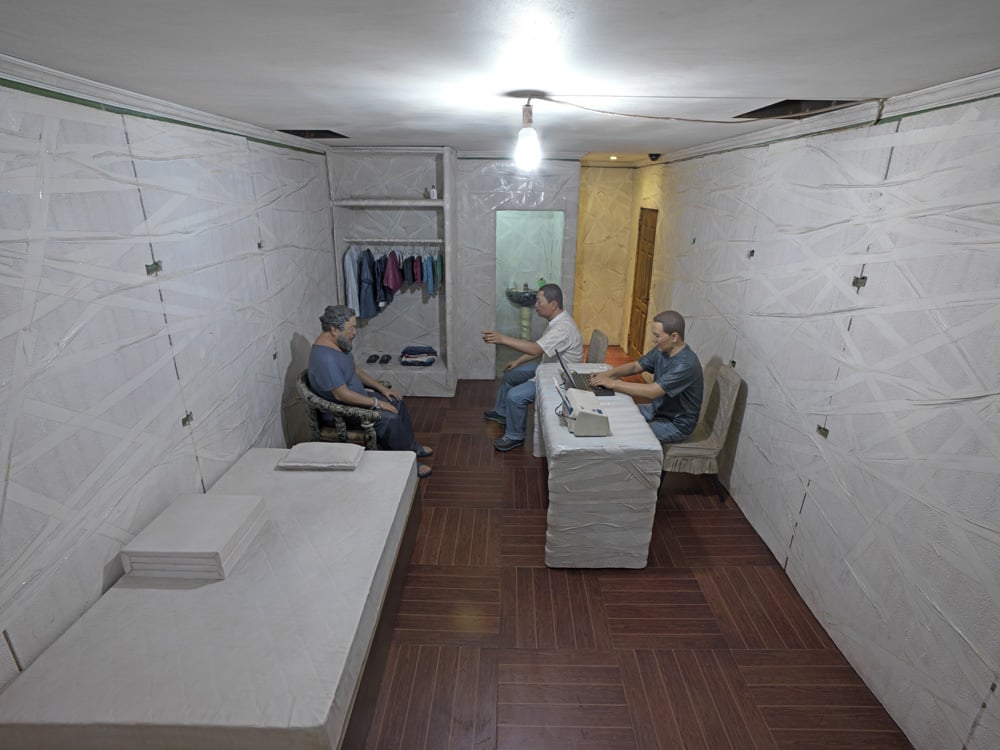
Ai Weiwei, S.A.C.R.E.D. (2013), a six-part work composed of (i) Supper, (ii) Accusers, (iii) Cleansing, (iv) Ritual, (v) Entropy, (vi) Doubt. Courtesy of Lisson Gallery.
Following his release in June 2011, Ai was confined to his native China until July 2015. He promptly went to Germany, where he was reunited with his six-year-old son, and has since been able to travel freely, including a return to the US last month.
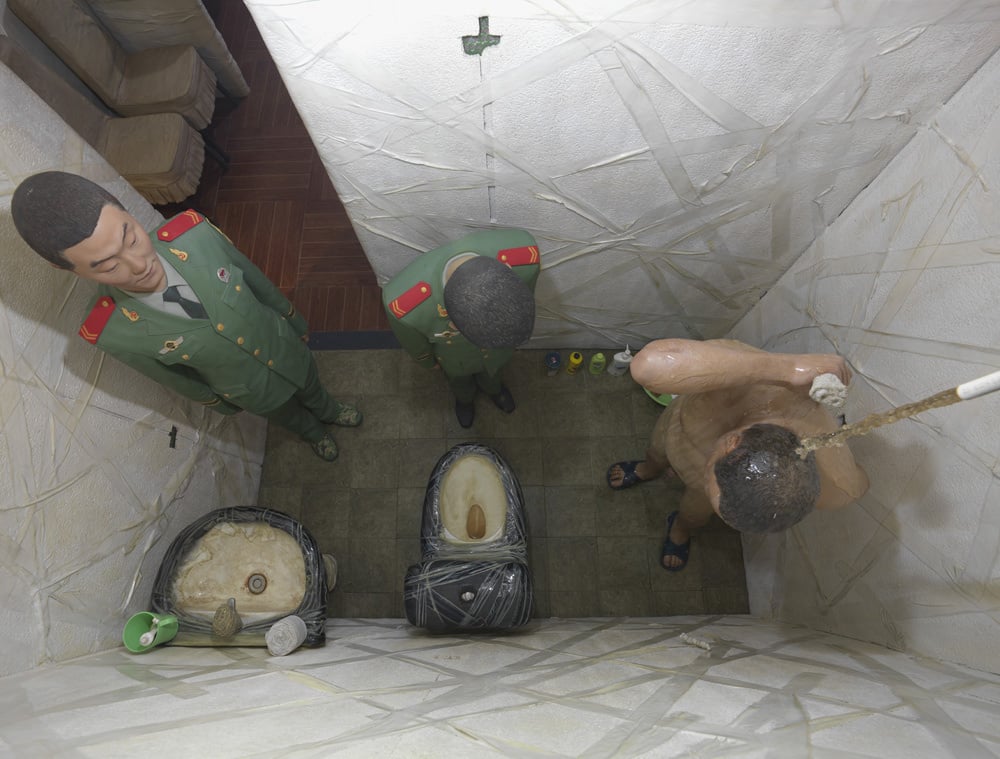
Ai Weiwei, S.A.C.R.E.D. (2013), a six-part work composed of (i) S upper, (ii) Accusers, (iii) Cleansing, (iv) Ritual, (v) Entropy, (vi) Doubt. Courtesy of Lisson Gallery.
Ai Weiwei, S.A.C.R.E.D., is on view at the cathedral in Cuenca, Spain, July 26–November 6, 2016.